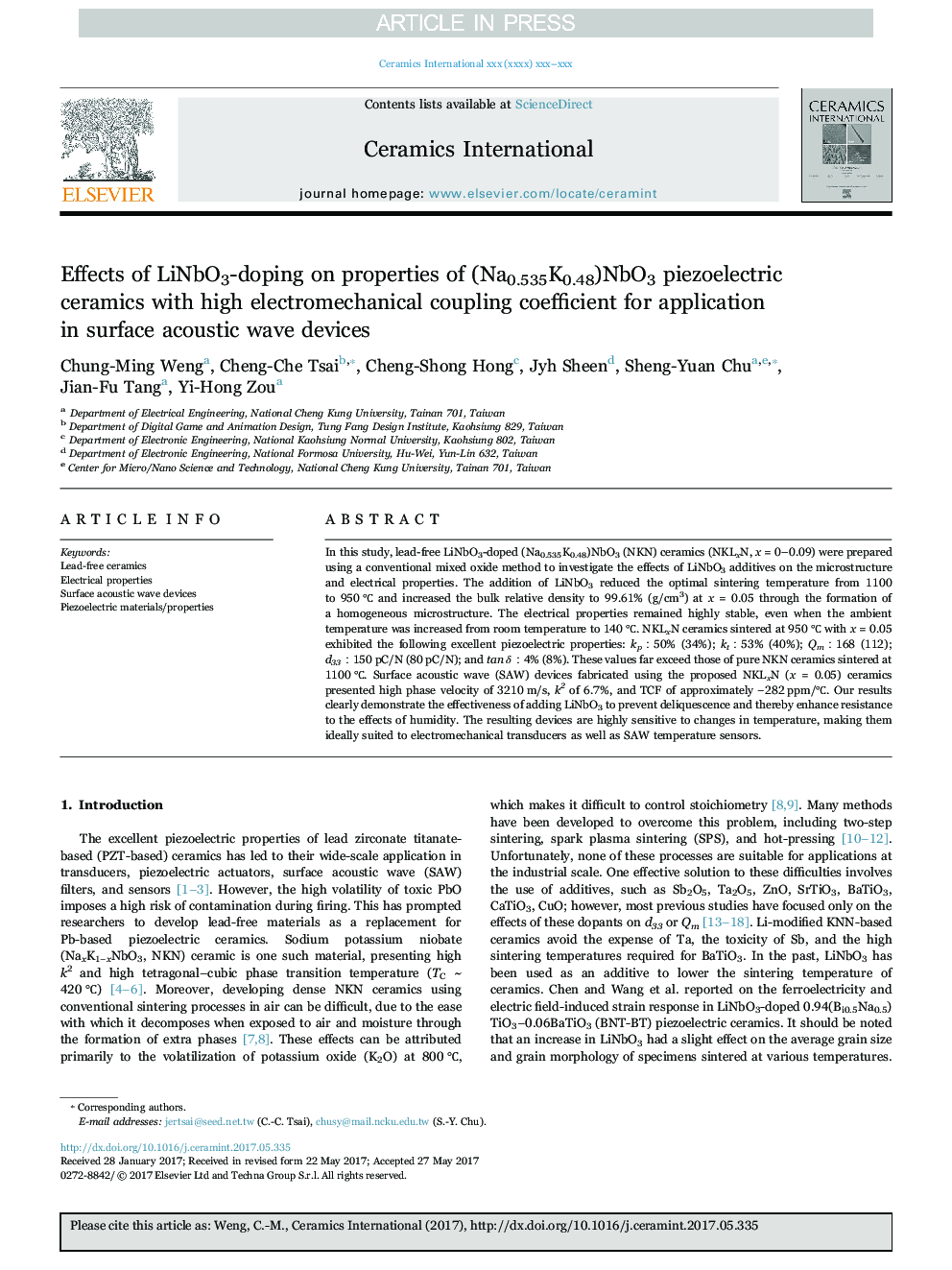| Article ID | Journal | Published Year | Pages | File Type |
|---|---|---|---|---|
| 5438090 | Ceramics International | 2017 | 7 Pages |
Abstract
In this study, lead-free LiNbO3-doped (Na0.535K0.48)NbO3 (NKN) ceramics (NKLxN, x = 0-0.09) were prepared using a conventional mixed oxide method to investigate the effects of LiNbO3 additives on the microstructure and electrical properties. The addition of LiNbO3 reduced the optimal sintering temperature from 1100 to 950 â and increased the bulk relative density to 99.61% (g/cm3) at x = 0.05 through the formation of a homogeneous microstructure. The electrical properties remained highly stable, even when the ambient temperature was increased from room temperature to 140 â. NKLxN ceramics sintered at 950 â with x = 0.05 exhibited the following excellent piezoelectric properties: kpï¼50% (34%); ktï¼53% (40%); Qmï¼168 (112); d33ï¼150 pC/N (80 pC/N); and tanδï¼4% (8%). These values far exceed those of pure NKN ceramics sintered at 1100 â. Surface acoustic wave (SAW) devices fabricated using the proposed NKLxN (x = 0.05) ceramics presented high phase velocity of 3210 m/s, k2 of 6.7%, and TCF of approximately â282 ppm/â. Our results clearly demonstrate the effectiveness of adding LiNbO3 to prevent deliquescence and thereby enhance resistance to the effects of humidity. The resulting devices are highly sensitive to changes in temperature, making them ideally suited to electromechanical transducers as well as SAW temperature sensors.
Related Topics
Physical Sciences and Engineering
Materials Science
Ceramics and Composites
Authors
Chung-Ming Weng, Cheng-Che Tsai, Cheng-Shong Hong, Jyh Sheen, Sheng-Yuan Chu, Jian-Fu Tang, Yi-Hong Zou,
